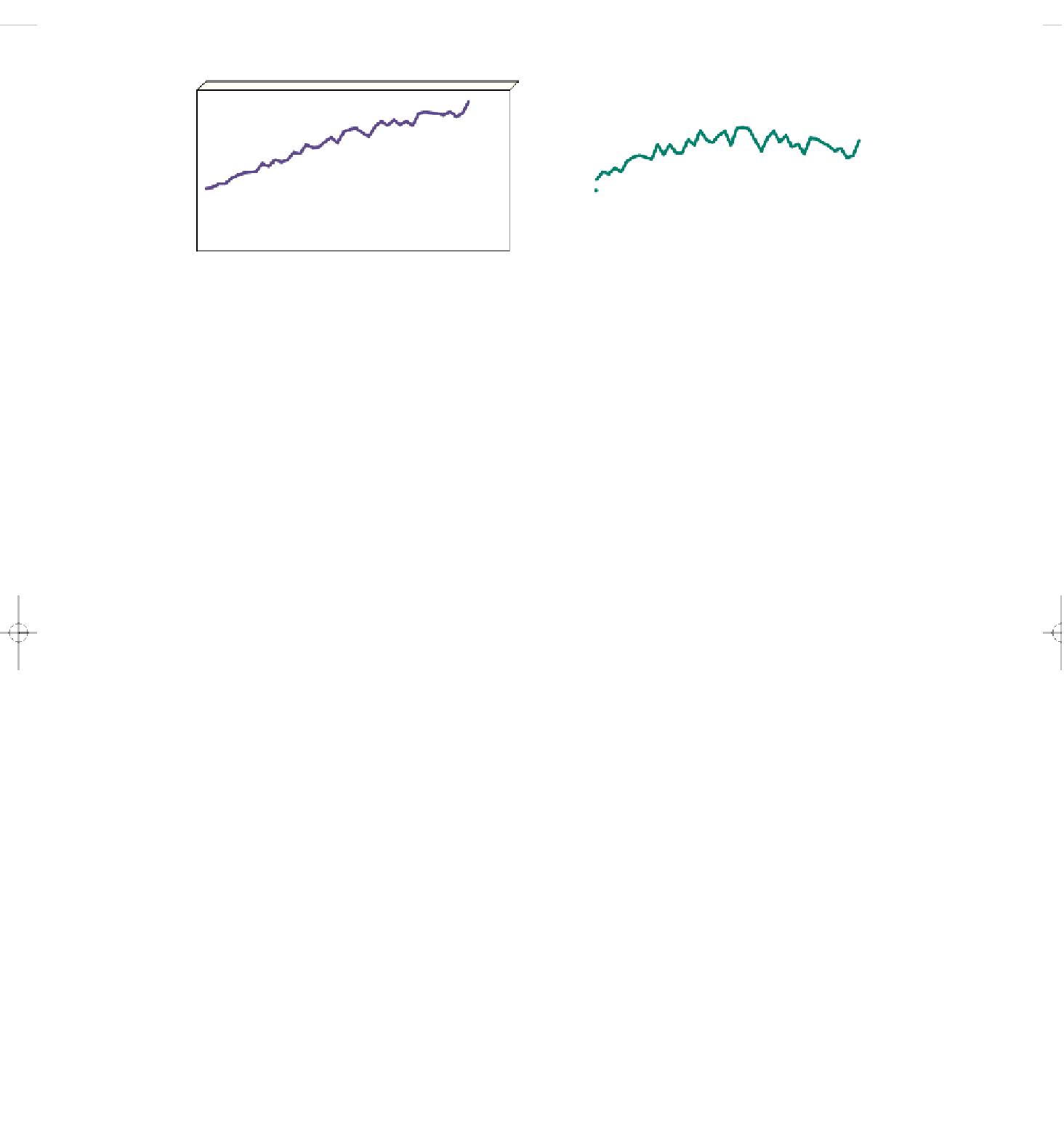Environmental Engineering Reference
In-Depth Information
400
2,000
350
1,500
300
1,000
250
500
200
0
150
1960
1970
1980
1990
2000
2010
1960
1970
1980
1990
2000
2010
Year
Total World Grain Production
Year
World Grain Production per Capita ™
Figure 10-17
Global outlook:
total worldwide grain production of wheat, corn, and rice (left), and per capita
grain production (right), 1950-2004. In order, the world's three largest grain-producing countries are China,
the United States, and India. (Data from U.S. Department of Agriculture, Worldwatch Institute, UN Food and
Agriculture Organization, and Earth Policy Institute)
trition
resulting from deficiencies of protein, calories,
and other key nutrients (Figure 1-12, p. 15).
Good news.
According to the FAO, the average
daily food intake in calories per person in the world
and in developing countries rose sharply between 1961
and 2004, and it is projected to continue increasing
through 2030. Also, the estimated number of chroni-
cally undernourished or malnourished people fell
from 918 million in 1970 to 825 million in 2001—about
95% of them in developing countries.
Bad news.
One of every six people in developing
countries (including about one of every three children
younger than age 5) is chronically undernourished or
malnourished. The FAO estimates that each year at
least 5.5 million people die prematurely from undernu-
trition, malnutrition, and increased susceptibility to
normally nonfatal infectious diseases (such as measles
and diarrhea) because of their weakened condition.
Each day at least 15,100 people—80% of them children
younger than age 5—die prematurely from these causes
related to poverty.
Good news.
We produce more than enough food to
meet the basic nutritional needs of every person on the
earth.
Bad news.
One of every six people in developing
countries is not getting enough to eat because food is
not distributed equally among the world's people.
Such unequal distribution occurs because of differ-
ences in soil, climate, political and economic power,
and average income per person.
Most agricultural experts agree that
the root cause
of hunger and malnutrition is and will continue to be
poverty,
which prevent poor people from growing or
buying enough food regardless of how much is avail-
able. Other factors are war and corruption, which
make it hard for poor people to have access to food
that they or others produce.
Science: Chronic Hunger
and Malnutrition
Some people cannot grow or buy enough food
to meet their basic energy needs. Others do not get
enough protein and other key nutrients.
To maintain good health and resist disease, we need
fairly large amounts of
macronutrients
(such as protein,
carbohydrates, and fats), as well as smaller amounts of
micronutrients
consisting of various vitamins (such as
A, C, and E) and minerals (such as iron, iodine, and
calcium).
People who cannot grow or buy enough food to
meet their basic energy needs suffer from chronic
un-
dernutrition.
Chronically undernourished children
are likely to suffer from mental retardation and
stunted growth. They also are susceptible to infectious
diseases such as measles and diarrhea, which rarely
kill children in developed countries.
Many of the world's poor can afford only a low-
protein, high-carbohydrate diet consisting of grains
such as wheat, rice, or corn. Many suffer from
malnu-
Science: Not Getting Enough Vitamins
and Minerals
One of every three persons has a deficiency of one or
more vitamins and minerals, especially vitamin A,
iron, and iodine.
According to the World Health Organization (WHO),
one out of every three people suffers from a deficiency
of one or more vitamins and minerals. The most wide-
spread micronutrient deficiencies in developing coun-
tries involve
vitamin A, iron,
and
iodine.
According to the WHO, 120-140 million children
in developing countries are deficient in vitamin A.
Globally, 250,000 children younger than age 6 go blind
each year from a lack of vitamin A and as many as 80%
of them die within a year.






